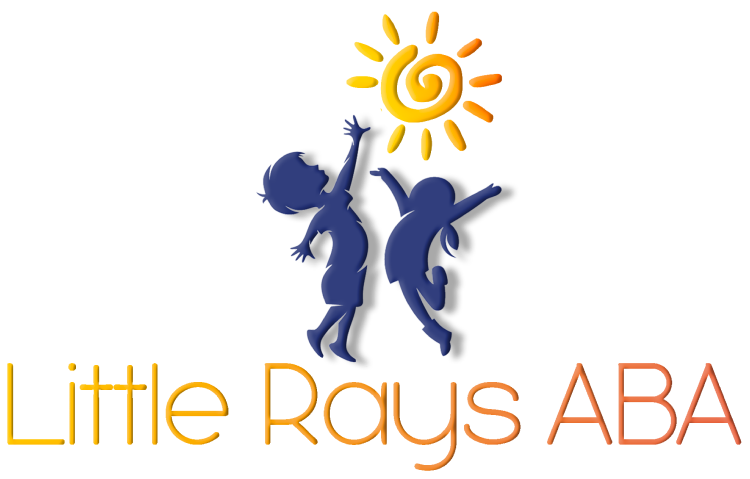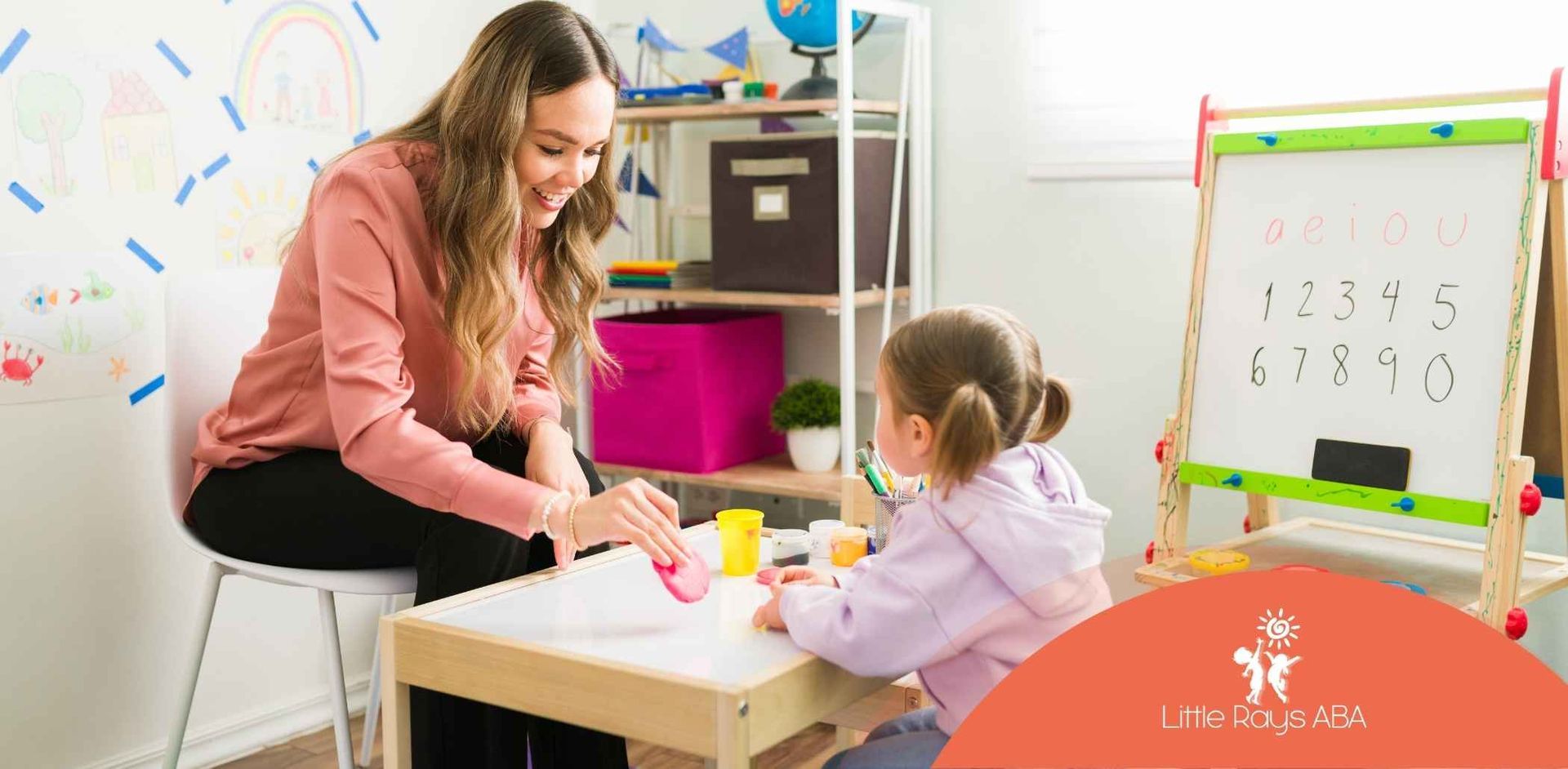
How Stressful Is ABA Therapy? Tips for Managing Anxiety
ABA therapy is a big part of care for autism. It uses applied behavior analysis to help people reach their full potential. This therapy works by looking at behavior change and helping to build skills with structured therapy sessions. It is very good at what it does, but there are some challenges. The work can be stressful for both ABA therapists and families. This is because of the time spent in therapy and the many things both sides must handle.
But, with strong stress management and open communication, these problems do not have to take over. If you make time for these things, you can lower feelings of anxiety. You can also help the therapy journey feel better for everyone. That way, people can get the most out of behavior analysis and ABA therapy.
Understanding ABA Therapy and Its Purpose
Applied behavior analysis (ABA) helps improve the lives of individuals on the autism spectrum. This therapy looks to build better communication skills, social interactions, and daily living skills. ABA therapists make personalized treatment plans. They use positive reinforcement and other techniques in their therapy sessions. This helps people learn new skills and deal with challenging behaviors.
With this clear structure, ABA not only helps with skill-building but also supports their emotional well-being and confidence. The goal is for people to reach their full potential, both in sessions and in their personal lives. Through behavior analysis, ABA makes a real difference in the lives of individuals and their families.
What Is ABA Therapy?
ABA therapy stands for Applied Behavior Analysis. This type of therapy uses tested ways to help people with behavior change, especially for people with autism. The goal is to teach new skills that make life better and to lower challenging behaviors that stop growth and independence.
Certified behavior analysts, who are experts in behavior analysis, help with this process. They look at what each person needs, find areas where they can improve, and make a clear plan that focuses on goals. This help from a professional makes sure the aba therapy keeps up with what people need as they grow and change.
The main parts of ABA therapy are using positive reinforcement to support good actions and using information and data to check progress. Every step is tracked so when people do well, the next step is built on that success. This makes the learning stronger over time.
Overall, aba therapy gives every person a set of tools built from science and care. With this, people who face unique challenges get the chance to do well and fit in both at home and in the world around them.
How ABA Therapy Supports Individuals with Autism
ABA therapy is a great support for people who are on the autism spectrum. In its sessions, therapists use steps that help kids early on. The goal is to give every child the right tools so they can do well in life. For example, ABA therapy often uses something called positive reinforcement. With this, children get rewards for good actions, and this helps their behavior change for the better over time.
The way ABA therapy works is by growing important skills. The focus is on social skills and ways to talk to others. So, the good effects are not just about stopping tough behaviors. It also helps people make friends, talk clearly, and take part in their community. It teaches kids how to get along and be active with other people.
Also, using aba therapy and early intervention means kids learn how to handle new things step by step. Both families and therapists work together by putting autism spectrum help into daily life. These real-life, friendly plans make sure results are clear, and changes can be seen. With this way, people can see real growth, which gives everyone a chance for a better life.
Recognizing the Stress Factors in ABA Therapy
ABA therapy can bring big changes, but it may also be hard for both therapists and families. Therapists deal with stress because there are intense therapy sessions, and they often have to handle challenging behaviors. This makes their stress levels go up. For families, the stress comes from following treatment plans and handling all the changes it brings at home.
It’s important to notice these sources of stress early. With good planning and open talks, you can find coping strategies that fit your needs. This can help make things easier for everyone. Next, we will talk about the stress in aba therapy and how to handle it.
Common Stressors for ABA Therapists
ABA therapists often work in places where there is a lot of pressure. They must focus on both how their clients do and take care of other job tasks. Here are some things that make their work hard:
- Compassion fatigue: Helping people with autism each day means facing strong feelings and sometimes pushback. This can make therapists feel tired inside over time.
- Challenging behaviors: Dealing with unwanted behaviors of clients takes both patience and skill. The therapist needs a plan and must keep going, which can be very hard and drain energy fast.
- Time constraints: Therapists work through many therapy sessions, write notes, and do checks on progress. There is little time for these tasks, and all the work can feel too much.
- Emotional exhaustion: Staying caring and focused takes a lot of the therapist’s energy. Over time, it can affect mental health and the level of job satisfaction they feel.
Finding a good balance between work and the rest of life is needed to help stop burnout. Using things like mindfulness, sharing with the team, and taking care of yourself can help. These ways support aba therapists in carrying out their important jobs.
Challenges Faced by Families During ABA Sessions
For families, making time for therapy sessions while handling all the daily tasks can bring many unique challenges. These often come from changes to home life and the need to plan each day very carefully.
Parents can feel a lot of stress as they try to balance their personal time with therapy routines. The set way that ABA works might make it hard to keep clear lines between therapy and home, which can make caregivers feel worn out. When people try hard to reach therapy goals, they may start to doubt what they do or how well they can do it.
Open communication with ABA professionals can help make things less tense. When everyone talks about treatment plans and shares worries, families and professionals can work better together. Joining support groups also helps. People can swap stories here and get valuable insights from others going through the same stuff.
Contributing Factors to Stress in ABA Settings
Stress in ABA places often comes from the hard work that goes into therapy and the many needs of the people involved. Therapists have a lot to do. They have to look after many people and keep track of everyone’s progress. This is not easy and can make them tired. Families go through a lot as well. They have to adjust to set therapy times, which can be hard and cause strong feelings.
If we look for what causes stress early, it is better. We can then come up with ways to stop people from getting too tired and burned out. Next, we will talk about the main things that make ABA programs hard and how the stress can hit everyone involved.
High Demands and Intensity of ABA Programs
The structured way ABA therapy works can be stressful for everyone involved. For aba professionals, these therapy programs need you to always pay attention. You have to find the right mix between personal support and good results. Doing the same activities many times also leads to high levels of stress.
Time is another big problem. Busy days with little room to move things around make both therapists and families feel rushed. Because aba therapy has to be done most days, it can be hard to see the line between work and home life.
Families also face time constraints when they watch and help carry out the plans. They often have to change daily routines so they fit with therapy, which means giving things up or changing the way the day runs. Fixing these problems, like setting up schedules that actually work, can make things easier and lower stress. It can also help aba therapy work better while letting people get some much-needed break at home.
Emotional and Physical Toll on Therapists and Clients
ABA settings can be tough both emotionally and physically for everyone involved. Therapists often work hard to help kids meet their developmental goals, and sessions can be intense. This working style and the need to care for others can cause compassion fatigue, where they feel tired and worn out over time. There are also physical symptoms like feeling tired or even getting headaches. These often come from busy schedules or long work hours.
Children on the autism spectrum sometimes feel frustrated during therapy. Therapy can be hard for them and affect their mental health. The goals are often repeated, which can help, but also test their patience and may lead to certain sensory problems.
Impact of Stress on Therapy Outcomes
High stress levels can have a big impact on the therapy experience. Both ABA therapists and clients might feel emotional exhaustion. This makes it hard to talk clearly and work well together in therapy. When there is too much stress, people find it hard to focus. This can make it tough to follow treatment plans in the right way. Positive reinforcement sometimes does not work well when therapists feel stressed, and this can slow down progress in learning new social skills. That is why using stress management methods is so important. It helps aba therapists feel better and also leads to better results for clients.
Effects of Therapist Stress on Patient Progress
Therapist stress levels can have a big impact on a child’s progress in ABA therapy settings. When stress goes up, it is easy for a therapist to feel emotional exhaustion. This can change the way they provide quality care and use effective strategies. If behavior analysts get compassion fatigue, they may not connect with patients as well. This can hurt the way they follow treatment plans.
It is important for therapists to have open communication and support. This helps lower stress and keeps the goal on the child’s growth and development. Putting mental health first helps therapists be at their best and leads to more positive outcomes for patients in aba therapy.
Maintaining Quality Care Under Pressure
Maintaining quality care for people on the autism spectrum during stressful times means finding the right mix of stress management and empathy. ABA therapists need to focus on open communication so they can handle any problems that come up in therapy sessions. Using relaxation techniques helps build a supportive environment for both the therapist and the person with autism spectrum disorder. This way, the therapist can stay focused and involved in the therapy journey.
It is also important for therapists to notice their own limits and take breaks when needed. This helps keep up job satisfaction and stops burnout. When ABA therapists work on building resilience and showing compassion, they are better able to deal with the unique challenges they find in their work. In the end, this helps create positive outcomes for everyone in therapy sessions on the autism spectrum.
Strategies for Therapists to Manage Stress and Anxiety
Using good and effective strategies is key for therapists when they face the unique challenges of aba therapy. Practicing self-care is good for mental health. It helps behavior analysts recharge so they can stay focused and engaged. Simple things like mindfulness and relaxation exercises help bring down stress levels. These things also help make the work environment better and more positive.
Having a strong support system at work is also important. Talking with peers, having regular check-ins, and sharing your experiences build open communication. This lets therapists talk about what they go through and learn from each other. All these practices help with job satisfaction. They also raise the quality of care given during therapy sessions.
Practical Stress Management Techniques
Finding good ways for stress management can really help aba therapists and their clients. Doing deep breathing during therapy sessions helps you to relax and put your mind on the present moment. This makes it easier to lower anxiety for both you and the person you work with. Also, practicing mindfulness helps with handling feelings. It makes you more patient, so therapists can have better talks and connections with patients.
Using time management methods can take away the stress that comes with a busy workday. It helps aba therapists to keep giving good quality of care. Having open communication with your support team builds trust and makes it easier to work together, which is good for your mental health and job satisfaction.
Importance of Professional Support Systems
Having strong professional support systems matters a lot for ABA practitioners. These teams help people handle the unique challenges in this kind of work. They give ABA practitioners a place to share feelings and get advice. This support is important to keep stress levels lower and stop compassion fatigue before it gets too bad.
When therapists work together using open communication, they can pass on valuable insights and talk over effective strategies. This teamwork helps make sure clients receive quality care. Putting focus on these support systems creates a good work environment. It also helps make the therapy experience better for both ABA practitioners and the people they help.
Supporting Families in Managing ABA-Related Anxiety
Finding your way through the ins and outs of aba therapy can be tough for families. Open communication between parents, caregivers, and therapists is very important. It helps lower worries and stress. When you understand treatment plans and what happens in therapy sessions, you feel more calm, and you know what to do to help your child grow.
Being a part of support groups is also helpful. In these groups, families get to share valuable insights and good coping strategies. It lets people come together, so there is more of a community feeling. These connections make you feel less alone and help create a supportive environment. It is good when everyone can give their views because it helps the child do better during their therapy journey.
Coping Strategies for Parents and Caregivers
It is common for parents and caregivers in aba therapy to feel overwhelmed. Having a steady daily routine helps make the day more stable and clear. This makes things less stressful. Setting time aside for your own care is important. You can do things like try relaxation techniques, take up hobbies, or join support groups. This helps you stay recharged and do well in your role.
Keeping open communication with therapists is key. This lets you and the therapists share ideas about your child's actions. Using these coping strategies is good for your well-being. It also helps make your child's aba therapy experience better.
Building a Collaborative Relationship with Therapists
Building a strong team with therapists is key for good results in ABA therapy. Open communication is important in this. It builds trust. It helps parents and caregivers to share valuable insights about their child’s progress and what challenges they see. When this happens, the behavior analysts can get good ideas from families. It helps them change treatment plans to fit the unique needs of each child.
When families and therapists work together as one team, they make a supportive environment. This helps children grow their social skills and feel less anxiety. Working together like this also makes therapy sessions better. As a result, everyone gets a better therapy experience and hopes for more positive outcomes.
Enhancing the ABA Experience for Reduced Stress
Creating a good and helpful space for aba therapy is important for everyone. Using relaxation techniques and keeping open communication makes the aba therapy experience better. When you encourage social interactions and notice small wins, it helps the room feel more caring. This makes both therapists and clients feel less stress.
It also helps to use tools that make things simple, like visual schedules or fun activities. These can make each session better for all. Working together and understanding the unique challenges people on the autism spectrum face can raise the quality of care. In the end, focusing on these things brings better results for those in aba therapy.
Creating a Positive and Supportive Therapy Environment
A good therapy environment is important for people taking part in ABA therapy. When you use open communication with clients, they start to trust you. Positive reinforcement helps boost motivation and makes them more willing to join in. If you create a calm space, it can lower stress levels for both the patient and the therapist. This lets both sides have better moments together. Adding some relaxation techniques and making sure the space feels nice also help set up a good place for learning. All of these things work together to help people pick up new skills. They also help everyone have a better and more rewarding therapy experience.
Tools and Practices That Simplify ABA Sessions
Using tools like visual schedules and social stories in ABA therapy can make therapy sessions run more smoothly. These tools help everyone know what to expect and keep children engaged, which can make it easier to handle challenging behaviors. Technology, like apps for data, can be useful too. They let the behavior analyst spend more time with the child and less on paperwork. It's good to look at these methods now and then to be sure they fit each child's needs. Keeping the place neat and organized can also help children move from one activity to another, which makes the therapy experience better for everyone.
Conclusion
Getting the best outcomes in aba therapy depends on knowing the challenges that come with it and finding ways to manage stress. Using relaxation techniques can help a lot. Keeping open communication between therapists and families is also important. This makes the therapy experience better for everyone. When people work together to make a supportive environment, it helps those on the autism spectrum reach their full potential. Working as a team and showing care can help everyone get through the steps of therapy together. In the end, this often leads to positive change and better emotional health for both the child with autism spectrum disorder and the people who care for them.
At Little Rays ABA, we know that starting therapy can feel overwhelming—for both kids and parents. As the best ABA provider in Florida, we focus on making ABA a calm, supportive experience from day one. Our team uses gentle transitions, child-led sessions, and clear communication to ease anxiety and build trust over time. Looking for stress-free support that truly understands your child? Reach out to Little Rays ABA and let’s take it one step at a time.
Frequently Asked Questions
What are the first signs of stress in ABA therapy for therapists and families?
The first signs of stress in ABA therapy can be when therapists feel more annoyed, have trouble paying attention, and get very tired from their emotions. Families might see changes in how their loved one talks or acts during the sessions. This can show higher levels of worry. If you spot these early signs in ABA therapy, it can help to fix problems right away.
How can therapists and parents improve work-life balance in ABA therapy?
Therapists and parents can help make work-life balance better in aba therapy. They can do this by setting clear boundaries and by putting self-care first. They should also use open communication. Doing regular check-ins and planning together can lower stress for both. This helps make sure that everyone’s needs are met during therapy sessions, and the therapy stays effective.
Are there specific resources available for managing ABA-related stress?
Yes, there are different things that help people handle stress from ABA. You can find support groups on the internet to talk with others. There are also some groups made for professionals. Some places have educational materials that you can use to learn more. There be workshops and training sessions made for therapists and families. These offer good ways to lower anxiety and make the therapy experience better.
What should families expect when starting ABA therapy?
Families will first have an assessment to see what goals should be set. After this, there will be sessions made to fit the child's needs. It is important to keep open communication with the therapists. You should also take part in the process. This will help you understand and support your child's progress.
How can communication help reduce stress in ABA therapy?
Good communication helps build trust and keeps things clear between therapists, parents, and patients. When everyone talks about goals, worries, and how things are going, they can work together to handle any problems. This makes therapy sessions in aba therapy calmer and less stressful. As a result, there is less worry, and aba therapy sessions work better for all.
Sources:
- https://www.behavior-analysis.org/
- https://my.clevelandclinic.org/health/treatments/25197-applied-behavior-analysis
- https://hrdspot.com/event/training-certified-behaviour-analyst/
- https://www.simplypsychology.org/positive-reinforcement.html
- https://www.nichd.nih.gov/health/topics/autism/conditioninfo/treatments/early-intervention
- https://pmc.ncbi.nlm.nih.gov/articles/PMC11487924/
- https://www.helpguide.org/mental-health/stress/stress-management
Related Posts





